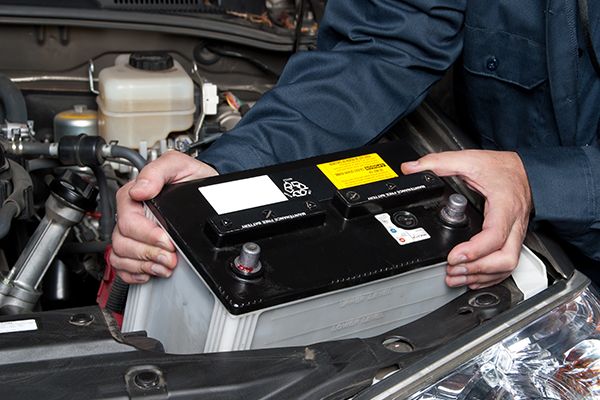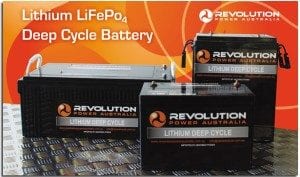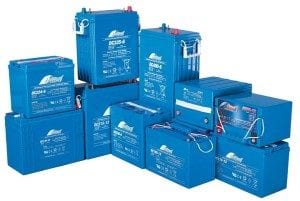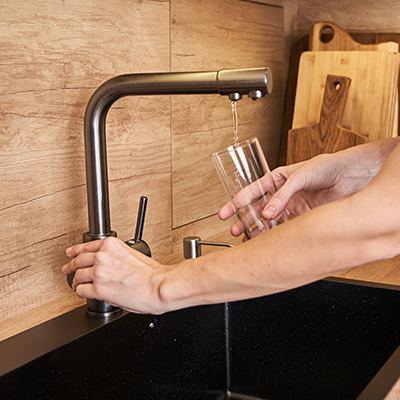
Caravan Battery Types
we have explained the requirements of a caravan (deep cycle) battery and how it differs from a typical car (SLI) battery.
There are different types of deep cycle batteries available on the market today. With the myriad of choices, and different user and manufacturer opinions, choosing the right setup can seem like a daunting task. The accuracy of the information available online is also questionable as most of it is posted by battery manufacturers themselves and is usually tailored to promote their product.
Here we will discuss the various setups available on their market, and the pros and cons of choosing each setup. The article aims breaks down the complicated details to give you a simpler picture, which will help you make the right choice depending on your requirements.
The popular chemistry for deep-cycle batteries are either –
- Lithium based Batteries (usually with Lithium Phosphate chemistries)
- Lead Acid based chemistries.
Lithium Batteries

Modern Lithium batteries are quickly gaining popularity, for various high end applications all around the world. They are known to be very reliable over long periods of time, requiring very low maintenance.
The best advantage of choosing Lithium batteries is the weight saving. Lithium is the lightest element on earth, and consequently Lithium batteries are the lightest batteries available on the market compared to any other battery of the same capacity. A typical 100AH AGM battery will weigh about 28-30kg. Whereas a Lithium battery with with the same capacity will weigh 14-15kg. That is a weight saving of 50%. This is of special importance where large amount of capacity is required, but the weight of the caravan needs to be kept down.
When drained to large extents Lithium batteries out-perform AGM batteries by a huge margin. At 80% depth-of-discharge (DOD) a typical AGM battery will last about 500-600 cycles. A Lithium battery will last over 2000 cycles at 80%DOD. The performance of Lithium batteries is also less afected by ambient temperature when compared to other batteries. This is especially useful in colder climates, where the performance of Lead-acid based batteries can drop drastically.
Lithium batteries can also supply large amounts of current without adversely affecting their capacity. A 100AH Lithium battery will readily discharge in excess of 200Amps of current, without it adversely affecting the battery life and capacity. They also have a much lower Peukert value (less than 1.1), which means they can deliver high currents without suffering much losses due to the resistance within the battery itself.
Due to the lower internal resistance Lithium batteries also have higher charging efficiency that allow for faster charging.
The main disadvantage of Lithium batteries are:
- They are very sensitive, and require proper care and maintenance. Due to their sensitivity to temperature, over draining, and over charging – they are usually monitored by a elaborate battery management system(BMS), with sensors to detect proper functioning of the battery. If discharged to low, a Lithium battery cannot be recovered, hence the BMS usually cuts off usage when the battery reaches 80% DOD. The minimum charging current and final charging voltage is also critical and using a non-compatible charger that usually leads to irreversible damage to the battery.
- Lithium is a rare and very expensive metal and the total usable Lithium in the world is estimated at around 39million metric tons. This places Lithium high up on the metal pricing charts, when compared to other common metals used in batteries such as Lead, Zinc and Nickel. As a consequence a good quality 100AH Lithium Battery can cost up to AUD1200.
Lead-Acid Based Batteries
Lead acid based chemistries are the most ancient solution for deep cycle batteries. Although, it has dropped in popularity in high-end applications – due its low cost, it remains the preferred choice for automotive and low-cost applications. The recent discovery of long life gel technology, has re-established the lead acid battery as a force to be reckoned with.
Early lead acid batteries were known as wet cell batteries and had cells filled with liquid electrolyte. Caravan batteries however are usually – Valve Regulated Lead Acid “VRLA” batteries. Also known as sealed battery or maintenance-free battery. In these batteries the liquid electrolyte is absorbed into a suitable substrate like glass fibre or silica gel. The resulting mixture is then placed with electrodes in a sealed compartment resulting in a spill-free design, that allows the battery to be mounted in any orientation.
AGM Batteries

Absorbed Glass Mat (AGM) batteries use very fine layers of glass fibre to absorb the electrolyte between the electrode plates. The soaked fibre glass mats and electrode plates are sealed in a inert plastic based box. This prevents leakage and spillage. Some manufacturers only soak the mat to 95% which prevents leakage even if the outer cover is broken. These batteries are knows as “starved” electrolyte batteries.
Gel Batteries
In Gel batteries the electrolyte exists as a thick jelly like form between the electrodes. This is achieved by adding Silica-Gel to the electrolyte. Similar to AGM batteries they are also placed with the electrodes in a sealed container rendering them spill and leak-proof. However, since the electrolyte is already in a gel form, they do not need to be starved to prevent leakage when broken. Standard gel batteries have been around before AGM batteries. However they are less hardy than AGM batteries, mainly due to the limitation of the gelled electrolyte. They cannot be charged at a slower rate, in order to prevent excess gases being released which can damage the cells. If over charged at higher voltages – they can develop irreparable voids in the gel, that permanently reduce the capacity of the battery.
New Technology
As with any modern technology batteries are being continuously researched, developed and tested to come up with better and cheaper solutions, to cater for a very demanding and competitive market. Different additives to the electrolyte and electrode can change the behaviour of the battery, and researchers are on a continuous mission to come up with the ultimate solution for long-term and intermittent energy storage. This section of the article will be updated as we continuously hear about what is new in the world of batteries. Some of the most recent technologies are:
Long life Gel and Tubular Gel Batteries
Promising performance that far outshines the current AGM and Gel batteries are the new Long Life Gel Batteries. This modified version of the gel battery has exceptional cyclic performance that is on par with, and sometimes out performs – Lithium batteries. Long Life Gel batteries can last 2800-3000 cycles at 80%DOD. Being lead acid based they are also much cheaper than Lithium batteries.
Zinc-Air Batteries
Sounding like something straight out of a science-fiction novel, Zinc air battery technology hopes to crush the dominance of Lithium batteries especially for high end applications. They work by using Oxygen freely available in air to oxidize Zinc. They are almost like a fuel cell, where Zinc is the fuel, and are recharged by replenishing the Zinc in the battery.


